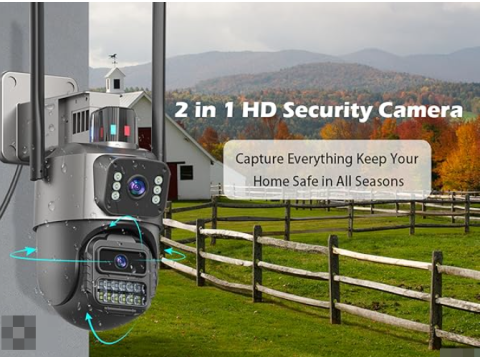Internet-Enabled Surveillance for Your Country Home
The ability to monitor your country home remotely via an internet-connected surveillance system provides both security and peace of mind. Whether through wired or wireless internet connections, modern surveillance systems can help you keep an eye on your property even from miles away.
Internet Options for Remote Monitoring
1. Wired Internet
If your property has access to wired internet, setting up surveillance is straightforward. Simply connect cameras or a recorder to the network.
- Static IP Address: A dedicated IP simplifies direct access to your system.
- Dynamic DNS (DynDNS): If you lack a static IP, services like DynDNS can bridge the gap.
- Cloud Services: Many modern systems integrate with cloud platforms, offering remote access without complex configurations.
Wired internet provides superior bandwidth, stability, and reliability, making it the best option where available.
2. 3G Wireless Internet
For properties without wired internet, 3G wireless connections can enable remote video monitoring.
- Realistic Expectations: While theoretical speeds can reach 3.6 Mbps, real-world performance often falls short due to signal strength and network congestion.
- Bandwidth Considerations: Viewing even one high-resolution camera (1.3 MP at 25 fps) can demand 4 Mbps. Lowering resolution and frame rates can make the system usable.
How to Optimize 3G Surveillance
To maximize efficiency on a 3G network:
Choose the Right Camera Resolution:
- For real-time monitoring, limit to one camera at a medium resolution.
- For multi-camera setups, consider a DVR to store footage locally and download clips as needed.
Reduce Frame Rate:
- Standard definition (960H) cameras can operate at 10 fps, suitable for security needs.
Use a Hybrid System:
- Combine online monitoring for a single key camera with offline recording for other zones.
Recommended Equipment for Wireless Systems
3G-Compatible Cameras or Modems:
- Some cameras include built-in modems. If not, ensure compatibility with external 3G modems.
GSM-Based Systems:
- While GSM cameras can’t stream live video, they can send MMS snapshots or alerts via SMS when motion is detected, making them suitable for basic security.
Practical Tips for Installation
- Protect Network Equipment: Place routers and modems in secure locations to prevent tampering or theft.
- Strategic Camera Placement: Ensure overlapping coverage to avoid blind spots, especially for critical zones like entrances and perimeters.
- Backup Power: Use an uninterruptible power supply (UPS) to maintain functionality during outages.
Conclusion
Setting up internet-based surveillance on your country property is a practical way to ensure its security and monitor activity remotely. While wired internet offers unparalleled reliability, wireless 3G systems can be a viable alternative with the right equipment and configurations.
By understanding your property’s unique needs and the capabilities of available technologies, you can build a robust surveillance solution that provides peace of mind wherever you are.

